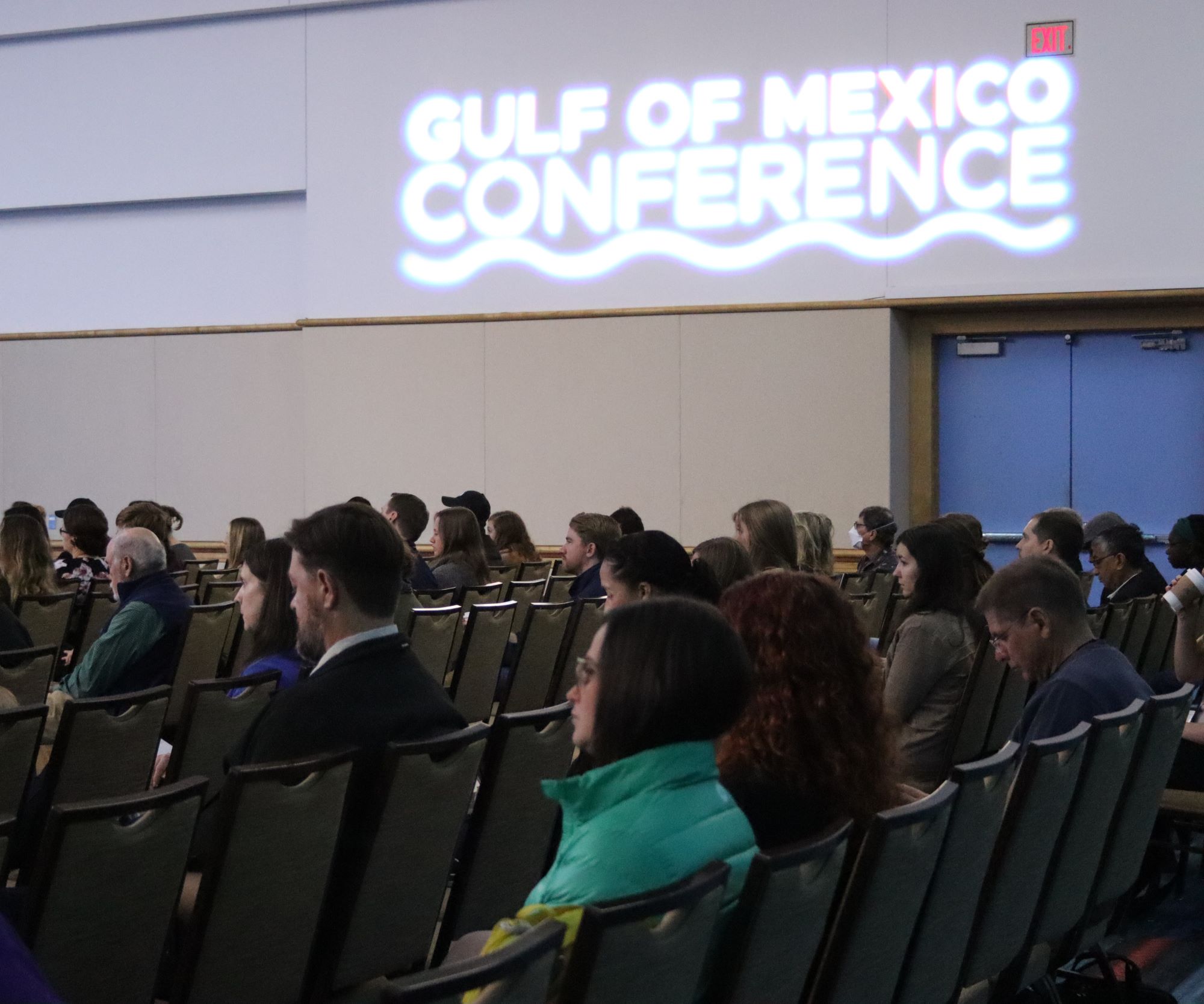More than 1,000 coastal experts gathered recently in Tampa to discuss the latest in Gulf of Mexico research and management. Many of the attendees are heading back home with their minds on the future of the Gulf.
The four-day Gulf of Mexico Conference (#GOMCON) focused on a wide-variety of Gulf-related issues, but two key themes were recurring: collaboration among scientists and resource managers, and resilience to storms and other disasters.
“The Gulf of Mexico Conference is one of the largest Gulf-focused meetings in the nation,” said Gulf of Mexico Alliance Executive Director Laura Bowie. “No other conference brings together this many scientists, managers, and professionals from federal and state agencies, academia, non-profits and industry to collaborate and discuss the latest in coastal research and management in the Gulf of Mexico. We are proud to host this important forum for science and engagement for the many dedicated people working on Gulf issues.”
The meeting kicked off with a welcome from Tampa Mayor Jane Castor, followed by discussions about coastal resilience and communication with local communities.
Leading the discussions were Florida’s Chief Resilience Officer Dr. Wes Brooks, The Weather Channel’s Carl Parker, international expert in weather and climate Dr. Marshall Shepherd, past president of the Reinusurance Association of America Frank Nutter and co-founder and CEO of the Institute for Diversity and Inclusion in Emergency Management (I-DIEM) Chauncia Willis-Johnson.
“We are experiencing new normals,” Shepherd warned in reference to shifts in temperature and storm intensity. “We have to design for this generation of storms.”
Speakers also noted how important human to human interaction is in the future of coastal resilience.
“It’s hard for people to be resilient when they are told they should have done things differently but don’t have the resources to do so,” said Willis-Johnson. “To respond, we need to have more compassion and empathy. We need be centered around people. And we need more diverse professionals.”
The Weather Channel’s Carl Parker shared a positive message before leaving the stage. “We have the ability to solve this problem and we need to give people a sense of hope and agency,” he said.
Overall, participants explored 16 workshops, 130 scientific posters, and 415 talks on 32 different focus areas including oyster restoration, harmful algal blooms, seagrasses, corals, coastal birds, blue carbon research, offshore wind, the Gulf dead zone and more.
At one of the most popular events of the conference, the Tools Café, attendees explored new and upcoming technology that can help improve coastal resource management. Twenty-seven new tools and resources were demonstrated at the event, including the new Coastal Homeowner’s Handbook app. This handy app provides important hurricane preparation and recovery resources for Gulf Coast residents.
On the last day, the Alliance did what it does best, continued bringing people together as part of the group’s six priority issue teams. These groups include participants from across the region, and across fields and agencies, in an ongoing effort to foster collaboration across the Gulf.
“Wes Brooks left the crowd with an important reminder about why collaboration across the Gulf is the most important thing we can do. He said, “All our boats rise and fall on the same tide in the Gulf.” The Gulf does not have boundary lines, and neither do we,” said Bowie.
The Gulf of Mexico Conference is hosted by the Gulf of Mexico Alliance, an organization celebrating 20-years of collaborative work on important Gulf of Mexico issues.
Learn more about the Conference, or check out our media resources including photos and video at GulfofMexicoConference.org. Keep up with all things Gulf of Mexico Alliance and #GOMCON by following us on Facebook, Instagram, LinkedIn or Twitter.
Photos: Flickr .
Thanks to the many sponsors helping make this event a success: the Gulf of Mexico Research Initiative; Harte Research Institute for Gulf of Mexico Studies; National Academies of Sciences, Engineering, and Medicine Gulf Research Program; NOAA RESTORE Science Program; Motiva; the Gulf of Mexico Coastal Ocean Observing System; ExxonMobil; Esri; Geosyntec Consultants; ATM; the RESTORE Act Centers of Excellence for Texas and Louisiana; Bureau of Ocean Energy Management; Stantec; Shell; State of Florida Institute of Oceanography; Equinor; Hess; and the U.S. Environmental Protection Agency.

